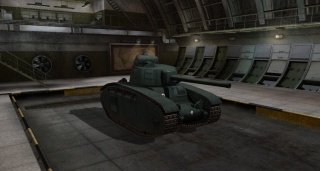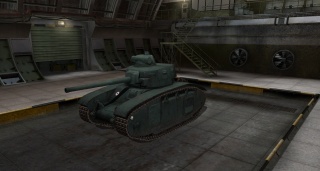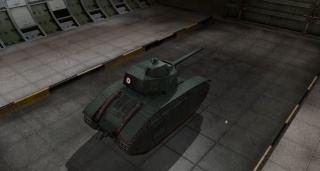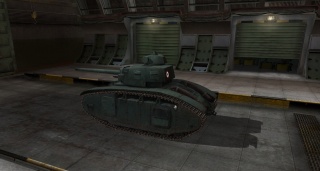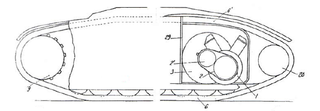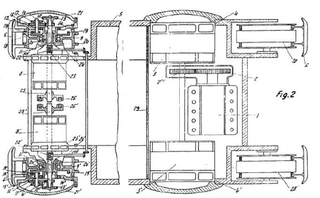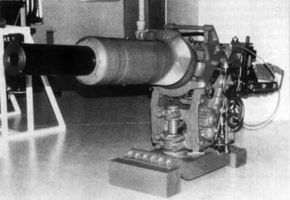BDR G1 B
BDR G1 B
Mouse over "
[Client Values; Actual values in
| 400,000 |
| 870184 HP Hit Points |
| 33.91/3417.7/40 t Weight Limit |
- Commander
- Gunner
- Driver
- Radio Operator
- Loader
| 350450 hp Engine Power |
| 30/10 km/h Speed Limit |
| 2224 deg/s Traverse |
| 10.3225.42 hp/t Power/Wt Ratio |
| NoNo Pivot |
| // mm Hull Armor |
| 60/60/6080/70/60 mm Turret Armor |
AP/HEAT/HE
AP/APCR/HE Shells |
46/2800/38
255/4800/255 Shell Cost |
| 110/110/175240/240/320 HP Damage |
| 74/92/38135/175/45 mm Penetration |
|
14.29 r/m ▲
6 r/m Standard Gun ▲ Rate of Fire Standard Gun |
|
1571.9 ▲
Standard Gun
▼
Standard Gun
▲
1440 Standard Gun ▲
Standard Gun
▼
Standard Gun
▲ Damage Per Minute Standard Gun |
|
0.46 m ▲
0.38 m With 50% Crew: 0.57 m ▲ Accuracy With 50% Crew: 0.471 m |
| 2.3 s 2.7 s Aim time |
| 2826 deg/s Turret Traverse |
| 360° Gun Arc |
| -5°/+14°-8°/+17° Elevation Arc |
| 11060 rounds Ammo Capacity |
| 2015 % Chance of Fire |
| 300 m 320 m View Range |
| 290 m 710 m Signal Range |
V
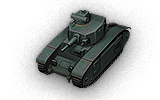
400000
The BDR G1 B is a French tier 5 heavy tank.
The project of a new vehicle was suggested by engineers of the Baudet-Donon-Roussel company in June 1938, but the design was never developed.
The BDR G1 B, or "Steel Potato", represents a significant departure from previous French heavy and medium tanks. Whereas the B1, D2, and D1 are all very heavily armored for their tiers and often struggle to penetrate and damage higher tier tanks, the G1 B, once fully upgraded, has absolutely no problems with firepower. Unfortunately, the G1 B is nowhere near as well-protected or durable as its predecessors for its tier. However, it more than makes up for this with its fantastic top gun, the 90 mm DCA 30, which is easily capable of destroying equal and higher tier tanks. The BDR G1 B along with the KV-1 is one of the few tier V's that can actually pit their weight in tier VII matches.
Thanks to Italian Tanks update, the BDR G1 B now has an acceptable rate of fire from what it used to be, and also got a dispersion penalty buff (lower on the move and on turret traverse) as well as the accuracy being 0.38 compared to old 0.4 on the 90MM DCA 30 cannon. BDR G1 B also now has 50 more hitpoint on both turrets.
The BDR G1 B leads to the ARL 44.
Modules / Available Equipment and Consumables
Modules
| Tier | Engine | Engine Power (hp) |
Chance of Fire on Impact (%) |
Weight (kg) |
Price (
| |
|---|---|---|---|---|---|---|
| IV | Renault T12 | 350 | 20 | 540 | 13000 | |
| V | Renault T14 | 450 | 15 | 750 | 22300 |
| Tier | Suspension | Load Limit (т) |
Traverse Speed (gr/sec) |
Rmin | Weight (kg) |
Price (
| |
|---|---|---|---|---|---|---|---|
| IV | Baudet-Donon-Roussel G1 | 34 | 22 | B/2 | 8000 | 4050 | |
| V | Baudet-Donon-Roussel G1 bis | 40 | 24 | B/2 | 8000 | 10550 |
| Tier | Radio | Signal Range (m) |
Weight (kg) |
Price (
| |
|---|---|---|---|---|---|
| V | ER 53 | 360 | 100 | 3650 | |
| III | ER 51 | 290 | 100 | 500 | |
| IX | ER 55 | 710 | 150 | 44100 |
Compatible Equipment
Compatible Consumables
Player Opinion
Pros and Cons
Pros:
- Good penetration and DPM, fantastic alpha damage for the tier on the 90 mm DCA 30 gun, good accuracy.
- One of the best non-premium credit-making tanks in the game with standard ammo
- Very high HP for the tier (920 with 2nd turret), matching the tier 6 ARL44 after it
- Useful regardless of matchmaking, since the gun can deal with 99% of tanks it can meet
- Good gun elevation and gun depression, great signal range
Cons:
- Horrible view range, even lower than its predecessor, the B1
- Poor overall armor with multiple weakspots (especially the turret), tall silhouette.
- Slow aiming time
- Slow turret and hull traverse speeds
Performance
The main advantage of the BDR is the 90 mm DCA 30. Marked as a Tier 7 gun on along with the 7,5/5,5 cm Waffe 0725 on VK 30.01 (H) (the only two left on Tier 5 chassis after the removal of the 107 mm ZiS-6 from the KV-1). It is quite an outstanding weapon; losing in penetration and accuracy only to the 75 mm Vickers HV of the Churchill I and the 75mm cannons of the VK 30.01 (H), the DCA 30 deals nearly double the damage, although it reloads slower than them. This gun is somewhat accurate at range for its tier, as to allow the BDR to take shots at a fair distance, although the dispersion when peeking or on the move suffers greatly. Try not to move the tank when firing, or even several seconds before being ready to fire, to avoid this aim penalty from movement or at least allow it to reduce.
In terms of armor, the upper glacis plate of the BDR is deceptively bouncy. However, the frontal turret armor only protects against lower tier tanks and shouldn't be depended upon to save the BDR from concentrated enemy fire. The BDR is also a very tall tank, which makes it easy to detect and hit. Open areas should be avoided at all costs. The large cupola above the turret becomes a weakspot that attracts enemy fire and thus, makes hull-down positioning, face-hugging, and hilly terrain potentially dangerous.
Mobility-wise, the BDR is relatively slow, but at acceptable levels for a heavy. Unfortunately, the BDR has a very slow hull AND turret traverse, meaning that it can be being circled by enemy medium and light tanks. This can - and should - be mitigated to a great extent with good crew skills (BIA + clutch braking).
Equipment-wise, the rammer helps the long reload and is a must. The other slots, especially after Equipment 2.0 upgrade, leaves a lot of potential options depending on the desired play style. Vents is extremely likely to be the second, a well balanced option. For the third - Need better dispersion and accuracy? Take Improved Aiming. Disappointed by the slow speed and hull traverse? Additional Grousers it is. Annoyed by weak ammo rack? Take Improved Configuration. Want to boost HP even more? Take Improved Hardening. View range is sadly one aspect that is quite awful when base. When optimised, it is still possible to permanently achieve 408m view range with crew skills and equipment (BIA + Situational awareness + Recon + bond Coated Optics), even without consumables. With the consumables a total of 436m view range is possible, which is not bad at all at tier 5. Depending on your playstyle and preferences, you can certainly focus on other aspects, leaving the view range alone and relying on your team to spot, but good players will always tell you how important it is to have good view range, especially when you are one of the last ones alive and need to rely on yourself to spot something.
The BDR absolutely excels as a support heavy tank, especially in urban environments, where it becomes an outstanding 'peek-a-boom' fighter, popping out from cover to smack an opponent in the face with heavy damage before retreating into cover to reload. Due to combination of high HP and great DPM you can make short work of virtually any enemy provided you don't let them come too close. Just make sure that you always have cover and not play alone without support. Never stay out in the open when there are enemy arty alive, particularly leFH18B2 which will make a minced meat out of you in the open even with maxed repair skills. You should also be VERY careful with all tanks with high-caliber HE rounds, like KV-2, O-I and similar, as well as tier VII heavies in general. You need to time your shots during their reloads and keep your distance. If you do it right, a missed or non-fatal shot from KV-2 can net you 3 shots in return, worth 720 dmg on average.
As an interesting side note, the G1B consistently ranks as one of the best non-premium moneymaking tanks in the game, thanks to the high damage of the 90 mm DCA 30.
All this said, many new/inexperienced players will consider this tank to be a bad tank. Make no mistake, this tank has quite a learning curve, but good players will always tell you how much they love their BDR G1 B.
Crew Skills
- Repair as the first skill for all the crew members is a solid choice for any heavy tank, allowing broken tracks or other damaged modules to be brought to operational condition as quickly as possible. With its large tracks, the G1B tends to get tracked often, and faster track repairs will allow it to save the repair kits for more important components.
- A more specialized set of first skills would be Recon (Commander), Snap Shot (Gunner), Smooth Ride (Driver), Situational Awareness (Radio Operator). The loader only has perks available, which are not useful until they have reached 100%, Repair is recommended for the loader, which may later be swapped out for his perks. The combination of Snap Shot and Smooth Ride act like a Vertical Stabilizer (which the G1B does not have access to), reducing the accuracy penalties while moving or turning the turret, and by extension, allowing the G1B to get an accurate shot off faster after stopping. This is vital, given the G1B's below average aim time and long reload time. Recon and Situational Awareness increase the tank's below average 320 m view range. Mentor may also be used instead of Recon if the emphasis is on getting the other crew members' skills up faster.
- Upon reaching 100% on the first skills, dropping the commander's skill for Sixth Sense is a good option. The loader's skill may be dropped in favor of Safe Stowage or Adrenaline Rush. However, the G1B does not have a particularly vulnerable ammunition rack, while Adrenaline Rush is highly situational, so neither of these perks are particularly essential.
- Brothers-in-Arms is a good perk to have on any tank, but requires all crew members to have it at 100% before it works. The bonus to crew skills is particularly noticeable when combined with Improved Ventilation.
Early Research
A non-upgraded BDR G1 B leaves much to be desired, its early weapons are relatively inaccurate and lacking in penetration(although second 75mm gun is OK for It's tier). The gun with which the G1B truly begins to show its potential is the 90 mm DCA 30.
- The ER 53 and ER 55 radios carry over from the B1. If the 75 mm SA44 is also available immediately if it has been researched on the ELC AMX before.
- If it is not available, priority should be given to the 75 mm SA44. It is actually lighter than the 75 mm SA32 stock gun, and can be mounted without upgrading the suspension.
- Next, the BDR G1B bis suspension should be researched. Without it, nothing else besides the Long 44 and the lightest of equipment can be mounted.
- The Renault T14 engine should be the next priority for a welcomed increase in mobility.
- The ARL-3 turret should then be researched next. It is required to research and mount the 90 mm DCA 30, as well as the ARL 44.
- The 90 mm DCA 30 is highly recommended to be researched on the G1 B, because not only is it the best gun on the G1 B, it is also used on the following ARL 44.
Suggested Equipment
Gallery
Historical Info
In 1935, the French Infanterie still lacked a satisfactory medium tank. While a reasonably effective heavy breakthrough tank in the form of the Char B1 was available, as well as several light infantry tanks about to enter production (namely, the Renault R35, Hotchkiss H35 and FCM 36), the only medium tanks available were the disappointing Renault Char D1 and only slightly improved Renault Char D2. At least 250 medium tanks would be needed to equip the planned organic tank battalions of the five mechanized infantry divisions, which would be the main Infanterie force for executing strategic offensive and defensive operations. The Cavalerie already had a good medium tank in the form of the SOMUA S 35, but the Infanterie rejected it for use on account of the S 35's limited climbing capabilities. Inter-service rivalry also played a role in this rejection, as the Infanterie wished to assert its dominance over the Cavalerie in the field of tank design.
The Twenty-Tonne Tank
Thus, on 18 December, the Infanterie issued its first specifications for a Char Moyen d'Infanterie de 20 tonnes ("20 tonne medium infantry tank"). The specifications called for a road speed of 50 km/h, an off-road speed of 20 km/h, a range of 400 km, trench crossing capability of 2 m, a wading depth of 120 cm, climbing capability of 80 cm and 45° slope. Armament was to consist of a 47 mm gun and a 7.5 mm machine gun, with an armor thickness of 40 mm. The hull was to be completely sealed against chemical weapons, and a radio was required. The weight limit of 20 metric tonnes was stipulated because of railroad, bridge-carrying, and pontoon capacity constraints.
In May 1936, the Conseil Consultatif de l'Armement invited French industry to initiate design studies for the new 20 tonne tank. However, at the same time it was increasingly realized that the Char B1 was overly complex and expensive, and was 2 tonnes heavier than necessary due to the use of riveted armor plate instead of more modern welding and casting techniques. The 20 tonne tank promised to be lighter, more mobile, cheaper and easier to produce, and also easier to train crews on. It was thus decided that the 20 tonne tank would also serve as the future char bataille ("battle tank") of the Infanterie, replacing the Char B1. The specifications were subsequently changed in October, calling for protection equivalent to that of the Char B1 (60 mm all around), increased trench crossing capability (250 cm), and armament of a high velocity gun capable of eliminating all expected enemy medium tanks as well as two machine guns. The other requirements remained the same. These specifications were highly ambitious, and the vehicle promised to be the most potent and modern French tank yet developed. This also meant that development would take some time, as the tank was too advanced for French industry at the time.
Char G
At the same time, debate was raging about the future use of the tank in the Infanterie. On one side were officers like Charles de Gaulle, who proposed that the Infanterie raise its own armored divisions similar to the DLMs (Divisions Légères Mécaniques - "Mechanized Light Divisions") of the Cavalerie or the German Panzerdivisionen - balanced forces with organic mechanised infantry and artillery, flexible enough to fulfill all possible tactical roles. More conservative officers opposed imitating the Cavalerie and insisted that the Infanterie should stick to its traditional role, that of the breakthrough. Some wanted the limited funds to be spent on producing a sufficient number of light infantry tanks to give each division its own organic tank battalion. Others contended that only heavy tanks should be built. The 20 tonne tank, now known as the Char G, was intended to be both mobile and heavily armored enough to spearhead breakthroughs, and only made sense if used in German-style armored divisions. Until the debate was settled, the future of the Char G remained uncertain.
Despite this, French industry was very interested in the Char G project, as it promised to become France's major tank-building program. With it would come lucrative state investments at a time when French industry was still reeling from the effects of the Great Depression. Seven companies submitted designs between late 1936 and early 1937: Établissements Baudet-Donon-Roussel (BDR), Société Nouvelle des Forges et Chantiers de la Méditerranée (FCM), Renault, Fouga, Lorraine de Dietrich, Société d'Études et d'Applications Mécaniques (SEAM), and Société d'Outillage Mécanique et d'Usinage d'Artillerie (SOMUA). Reports were issued on each of the proposals, only SEAM and Renault's projects were sufficiently advanced for construction of prototypes to be approved, their good connections with the French military having allowed them to begin design work even before the specifications had been officially issued. The proposals of BDR, Lorraine de Dietrich, and Fouga were kept under consideration until further studies on their feasibility had been completed. On the instigation of Prince André Poniatowski, head of a design bureau subcontracted by SEAM, the Char G specifications were changed in November 1937 to require a hull-mounted 75 mm gun as the Char G's primary armament, which was unsurprisingly a feature of SEAM's proposal. This caused many problems for the other competitors, as their designs had no room for such a large weapon in the hull. This change in requirement, along with the increase in armor demanded added about 4 tonnes to the designs, and as of 20 February 1937, none of the designs met the weight limit of 20 tonnes, and were projected at 23-35 tonnes. Louis Renault's design featured a 75 mm gun mounted in a turret, and back in 1936 he had proposed this arrangement as an alternative, which was well-received. Capitalizing on this, he bribed a high-ranking officer of the Direction de l'Infanterie to change the design requirements yet again, this time making a 75 mm gun in the turret mandatory. This forced Renault's competitors to completely redesign their proposals, giving Renault a huge advantage and inevitably causing large and, as Renault hoped, fatal delays to the competition's proposals.
Char G1
By late 1937, the project had been renamed Char G1, and all prototypes then authorized received official designations: G1 L (Lorraine), G1 R (Renault), G1 B (BDR), G1 F (Fouga), G1 P (SEAM). The SOMUA and FCM projects had been discontinued for being too vague or lacking innovation, along with the fact that these two companies had their hands full manufacturing other types. On 1 February 1938, the Direction de l'Infanterie issued a third major change to the specifications. The maximum weight was increased to 35 tonnes in order to fit the 75 mm APX 32-calibre gun in a turret (known as the 75 mm SA32 in-game). The ever-changing design requirements caused most companies to slow the design process, as they were unwilling to invest much money in an ever more complex project with uncertain prospects. In order to speed up the process, on 8 June 1938 Maurice Lavirotte of the Atelier de Construction de Rueil (ARL), the French Army's workshop, was dispatched to assist the companies with construction. If armor plate was not available for the companies, boiler plate was permitted in the construction of the prototypes.
New Specifications
On 12 July 1938 a much more detailed list of specifications was given. In general they called for a tank that was powerfully armed, immune to standard anti-tank guns and possessed excellent tactical and strategic mobility. In detail, the specifications demanded a long, high velocity, semi-automatic 75 mm 32-calibre gun as the main armament; a 7.5mm machine gun in the turret that can also serve as an anti-aircraft weapon, a machine gun in the front of the hull or the turret, a minimum ammunition load of 100 rounds for the main gun and 30 magazines for the machine guns, an empty weight of 30 and a combat weight of 32 tonnes. The engine was to be able to be both electrically and manually started, while the tracks were to be fully accessible. A maximum speed of 40 km/h (average 30 km/h) on roads and 20 km/h offroad was required. Two fuel tanks were to give a range of 200 km or 8 hours endurance off-road. Climbing capability was demanded to be 90 cm and 85% on a solid or 65% on a wet slope, while trench-crossing capability was to be 250 cm and the wading depth would be 120 cm. For the first time, dimensional limits were also set: the width was to not exceed 294 cm to facilitate rail transport, the absolute height of the fighting compartment was to not exceed 120 cm, but yet be sufficient to hold a side door. With regards to the gas-proof armor, the demanded thickness remained at 60 mm, but the use an appliqué armor was forbidden. The armor could be cast — with the sections connected by bolts or, preferably, gudgeons, or electrically welded. Automatic fire extinguishers were also required. The crew were to have advanced vision and fire-control equipment. The cupola, armed with the secondary 7.5 mm machine gun, was to have have a large episcope to which the main turret was slaved, allowing the commander to lay the 75 mm gun on the target himself. The cupola would also be fitted with an optical telemetric rangefinder. The gun was to be a 32-calibre 75 mm gun. Despite its short length, the gun would have good armor penetration using Brandt tungsten armor piercing sub-caliber ammunition. None of the projects in the summer of 1938 could meet these specifications without a fundamental redesign.
In France during the 1930s, tank turrets were usually designed separately from tank hulls, in order to serve as standard types usable on many different vehicles. On 1 June 1938 the commission determined that three teams, those of ARL, FCM, and Renault, were to develop new turrets capable of being fitted to the Char G1 under the new specifications. They were invited to make the necessary changes and consider existing or new high velocity 75 mm guns. In July 1939, ARL produced a prototype of both a turret, the 5.7 tonne ARL 3 fitted with a turret-basket and having a turret ring diameter of 188 cm, and a 75 mm gun, which had been developed for the FCM F1 super heavy tank project. Similarly, FCM developed a modified 7.5 tonne version of the welded octagonal auxiliary turret on the FCM F1, equipped with an advanced semiautomatic loader and a turret ring diameter of 185 cm. As a low-risk project, FCM also developed the welded, octagonal F4 turret that had been developed from that of the Char 2C super heavy tank, and was equipped with the ubiquitous 75 mm mle. 1897 field gun.
Char G1B
Établissements Baudet-Donon-Roussel proposed to build a tank with a similar general layout to the Char B1, including the distinctive high-running tracks but with seven road wheels per side that did not require daily lubrication, instead using sealed ball-bearings. The track had a continuous rubber (Pendelastic) inner lining. The project had the following dimensions: a length of 556 cm; a width of 280 cm, and a height of 285 cm. It was the largest and heaviest of all proposals with a weight of 28.5 tonnes. Track width was to be 35 cm, the normal wading depth 145 cm; BDR thought it also possible to make the tank fully submersible in order to cross rivers while being guided from the river bank. It was planned to install an air-cooled Potez 12V 320 hp engine, placed transversely in the hull. The transmission was to be petrol-electric and of the Gebus-Roussin type. The fuel tank would have a capacity of 520 liters. The armament would consist of a 75 mm SA35 howitzer in the hull with 70 rounds. In the 1937 configuration it would make use of the APX 4 turret with a 47 mm SA35 gun; 102 47 mm rounds would be carried. As the hull was wide enough to place the 75 mm gun in the middle, the turret should have been moved to the left, but this was forgotten in the proposal, as the commission pointed out.
When the changed specifications asked for a 75 mm gun in a turret, the project threatened to become much too heavy, since the hull was already so large. The commission in the summer of 1938 urged BDR to remedy this somehow, but the problem proved to be insurmountable. A proposal to install a more powerful 350 hp Renault engine only partly compensated for the reduction in mobility. It also transpired on 13 April 1939 that the intended ARL 3 turret brought the Char G1 B's height to 325 cm, and could not be fitted without making the design too wide for rail transport. The weight, now projected at 37.5 metric tonnes, exceeded pontoon limits. The project was suspended on 10 September 1939, even though a prototype had been ordered in March 1939 by the Ministère de la Guerre. A wooden mockup was all that was ever finished, and even that could not be shown to the commission because it was, for security reasons, constructed in an enclosed room lacking a sufficiently large exit. No complete prototype was ever built. Despite this, the G1B's chassis would later be used as the basis for the ARL V39 assault gun.
Historical Gallery
Historical Accuracy Errata
There is no indication that the 90 mm DCA 30 was to ever have been fitted to any of the G1 projects.
- The 75 mm SA44 was developed in 1944, long after the G1 B had been cancelled.















